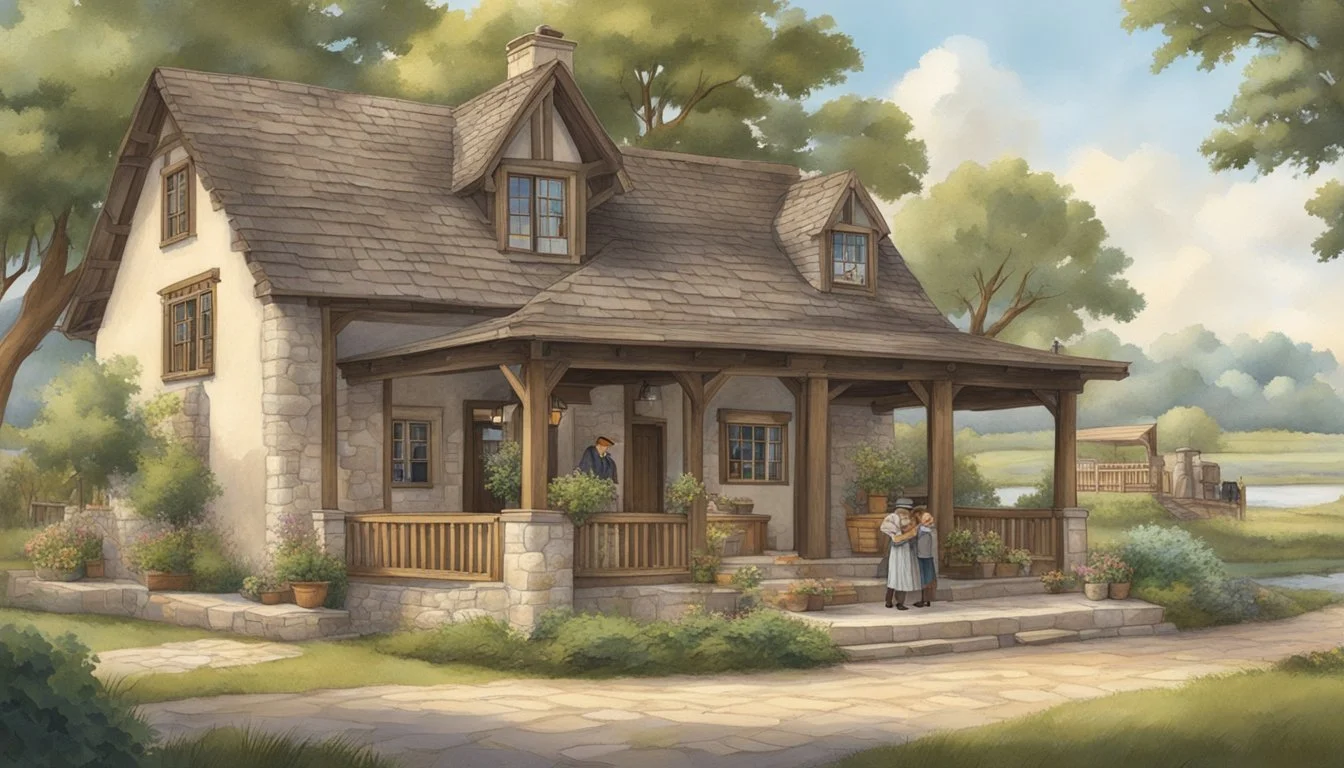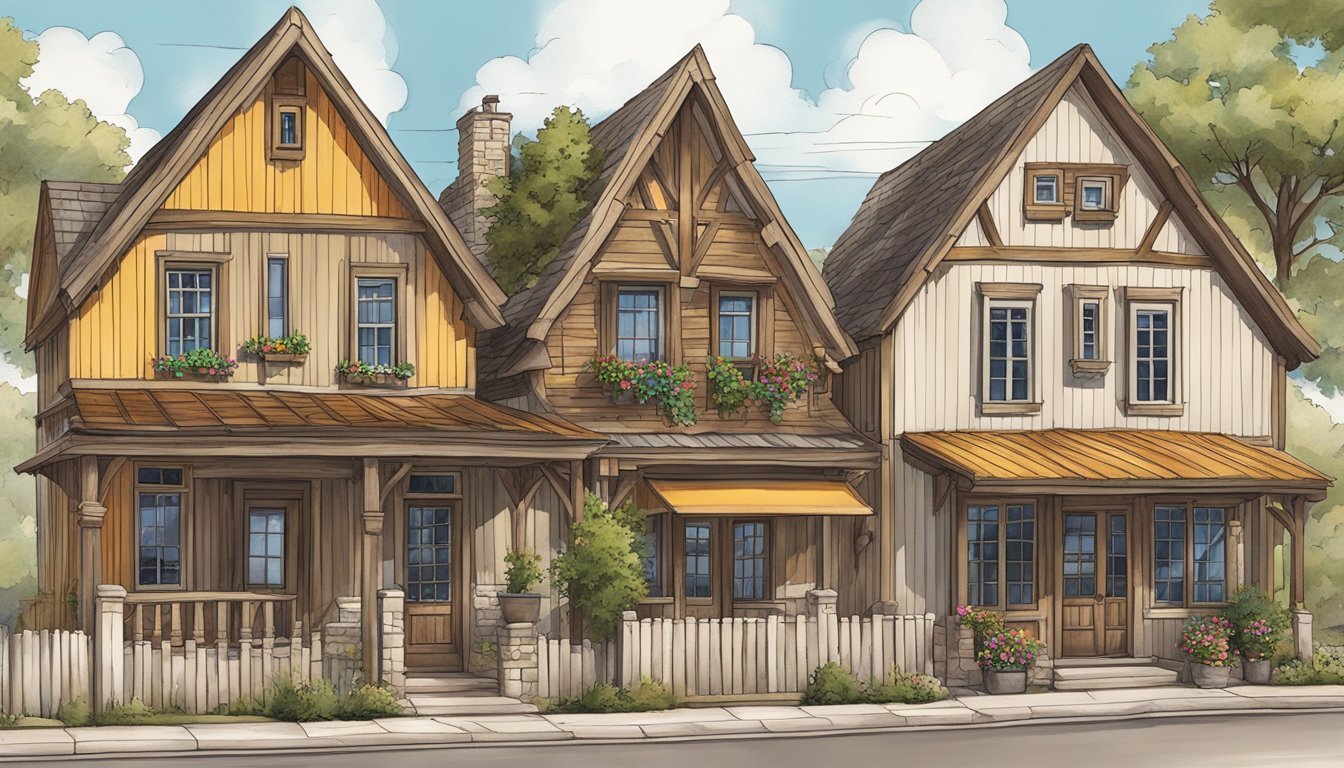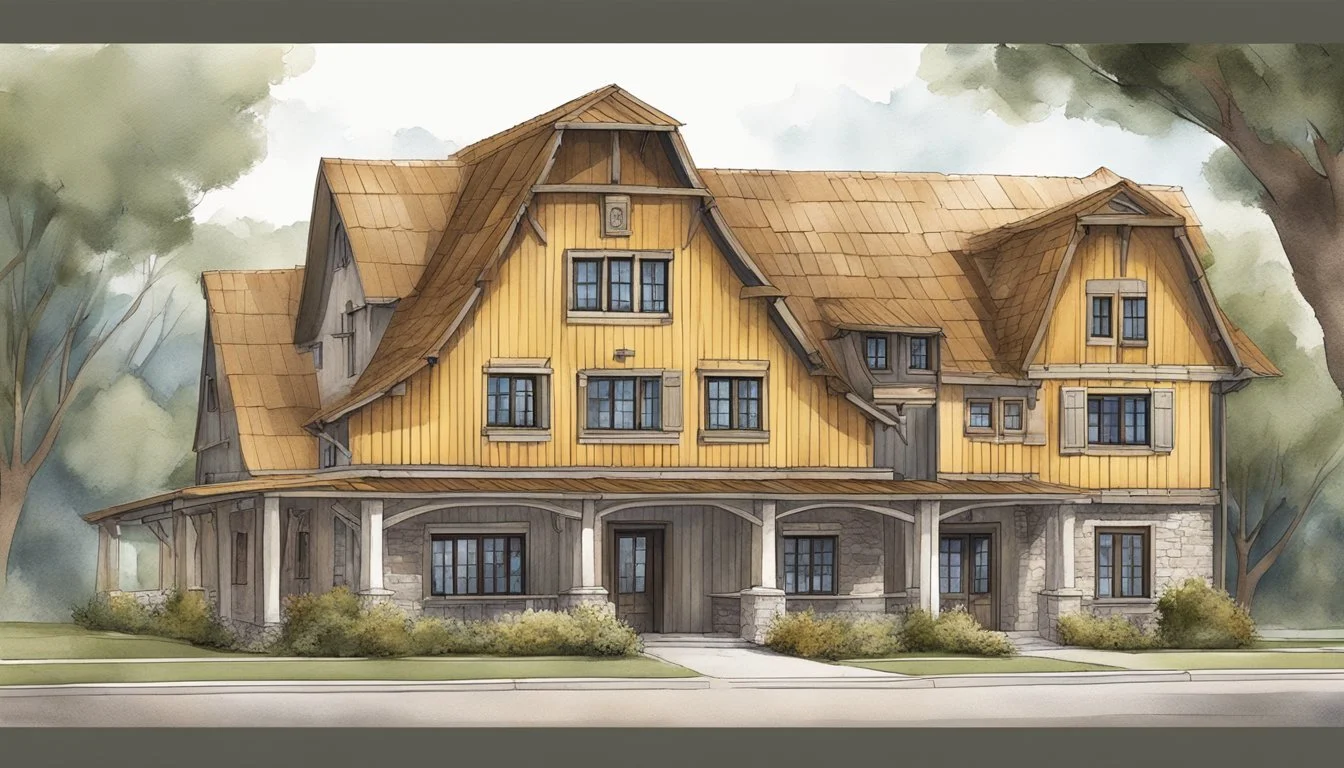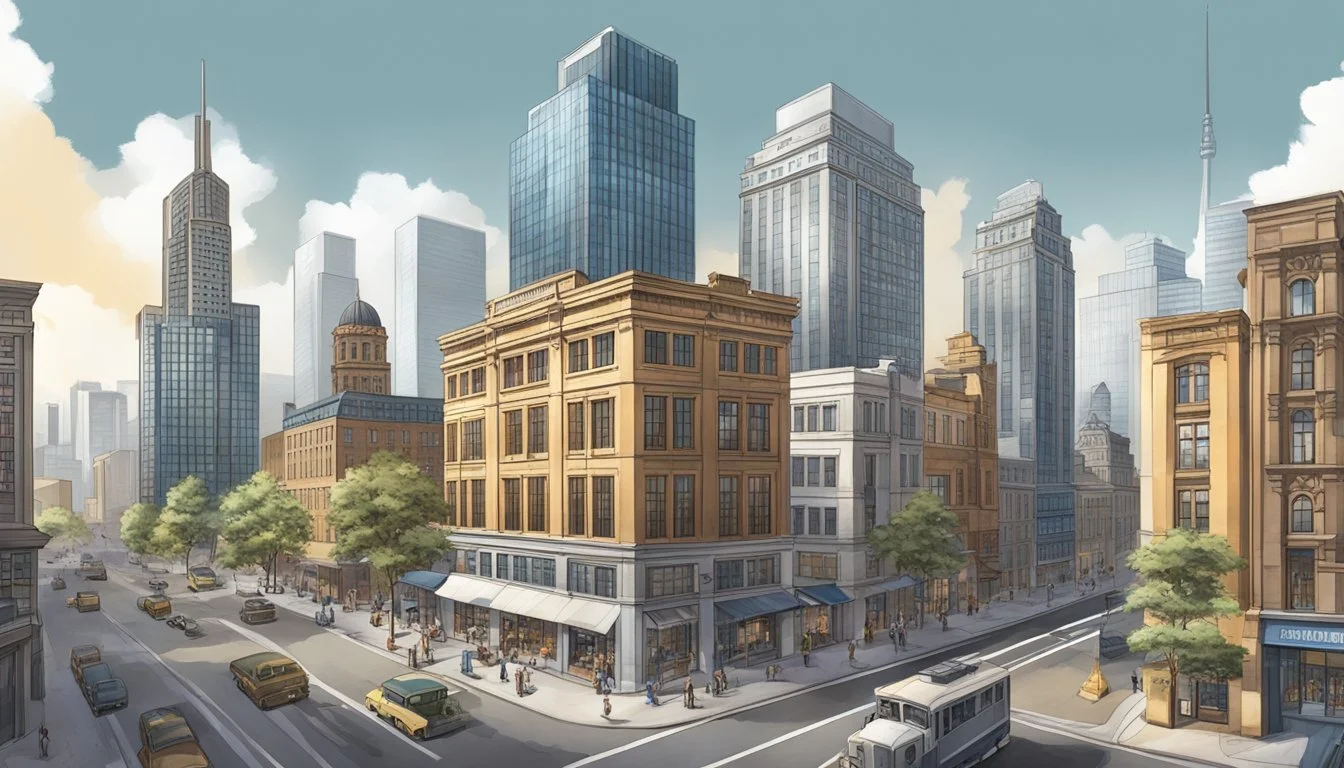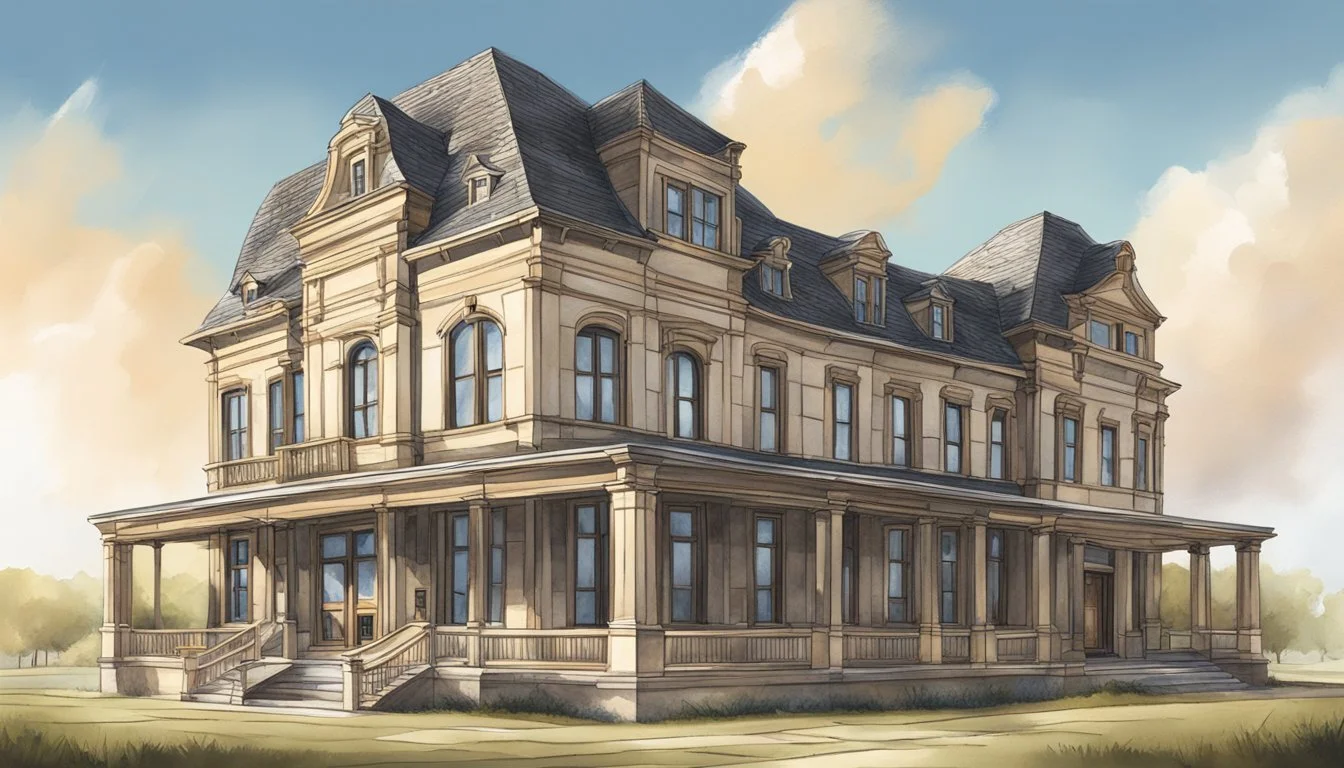The Legacy of German Texan Architects and Builders
Shaping the Lone Star State's Aesthetic
The influence of German immigrants on the architectural landscape of Texas is a testament to the state's rich cultural mosaic. In the mid-19th century, a significant number of Germans arrived in Texas, bringing with them a distinct architectural style that would leave its mark on the region's buildings and farms. Adapting to their new environment, these skilled craftsmen and builders took elements from their homeland's traditional styles and merged them with the needs and materials found in the heart of Texas, particularly in the south central regions and Hill Country.
German Texan architects and builders were instrumental in shaping a unique vernacular architecture that stands to this day. As a blend of European heritage and Texan spirit, they pioneered the incorporation of local resources into their designs while maintaining aspects of German craftsmanship. The Fachwerk—half-timbered—buildings seen in towns like Fredericksburg and New Braunfels are living exhibits of this legacy. They not only represent an architectural tradition but are embodiments of the cultural integration that these immigrants pursued—symbolizing a harmonious blending of German precision with Texan resourcefulness.
The legacy of German Texan architecture is more than an aesthetic achievement; it carries the stories of communities and their adaptability. Churches, houses, and commercial buildings across central Texas, particularly those in Medina County and other enclaves of German settlement, showcase the enduring impressions of these early architects and builders. From functional farmsteads to decorative town centers, German Texan contributions continue to influence both the skyline and the cultural identity of the region.
Historical Context and Arrival of German Settlers
The tapestry of Texas's architectural landscape owes much to the German immigrants who arrived during the nineteenth century, bringing with them distinct building traditions that would shape both rural and urban spaces.
Early Immigration and Settlement Patterns
German settlers began arriving in Texas in the 1830s, with the bulk of immigration occurring after Texas gained independence, becoming the Republic of Texas. Through entities like the Adelsverein, also known as the German Emigration Company, thousands of German immigrants were encouraged to settle in Texas. They established significant communities, notably Fredericksburg and New Braunfels, which became hubs of German culture in Central Texas.
Major Settlements:
Fredericksburg (Founded in 1846)
New Braunfels (Founded in 1845)
German Texan Communities in the 19th Century
By the end of the nineteenth century, Germans composed more than five percent of the Texas population. These communities, particularly concentrated in Central Texas and to a lesser extent in areas of East Texas, retained many German traditions while contributing to the state's cultural diversity. They took advantage of the rural Texan environment, which bore similarities to their homeland, to establish farms and towns that reflected their German heritage.
Cultural Centers:
Central Texas: Strongholds of German culture
East Texas: Lesser, but notable German presence
Impact of World Wars on German Texan Identity
With the advent of World War I and World War II, the German Texan identity faced scrutiny and pressure in the broader social context. Many German Texans faced a cultural dilemma, navigating between their German roots and the growing nationalism in the United States. However, despite these challenges, the architectural and cultural imprint of early German settlers persisted, embodying a unique blend within Texas's diverse heritage.
Cultural Dilemma:
World War I & II: Nationalism vs. German heritage
Post-war: Preservation of German-inspired architectural styles
Architectural Contributions in Texas
German Texan architects and builders have left an indelible mark on the architectural heritage of Texas, particularly evident in the distinctive styles and structures as well as their influence on the broader Texas landscape.
Distinctive Architectural Styles and Structures
German influence on Texas architecture is most visibly reflected through Fachwerk houses, a traditional German timber-framing building technique that involves a framework of timber with infill of stone or brick. These structures are prevalent in the Texas Hill Country, where German settlers adopted local materials such as stone and wood to construct both houses and churches. The vernacular architecture displayed in these structures aptly represents the seamless blending of German design principles with the available resources of Texas, creating a unique Texan-German architectural style.
In towns such as Fredericksburg and New Braunfels, Fachwerk construction is particularly notable, with many buildings in these small towns showcasing this distinctive framework. Additionally, in larger cities like Austin and San Antonio, German Texan architecture stands out through its sturdy design and pragmatic aesthetic.
Influence on the Texas Landscape
The architectural contributions of German Texans have considerably shaped the cultural and physical environment of many parts of the state. Beyond individual buildings, German architects and builders influenced the urban design of small towns throughout the region, with central squares, wide streets, and a mix of commercial and residential buildings adhering to the utilitarian yet comfortable Germanic sense of community space.
German Texan Architectural Influences Fachwerk Houses Hill Country Stone Churches Vernacular Residential Designs
Their architectural legacy contributes to the character of Texan towns, merging European heritage with local needs and materials. The use of local stone in construction has particularly enabled these historic structures to withstand the test of time, symbolizing the enduring German influence in the heart of Texas.
Cultural and Societal Influence
The legacy of German Texan architects and builders extends beyond physical structures into the cultural and societal fabric, influencing everyday life and community celebrations. Their impact is evident in traditions, language, and culinary preferences that persist in Texan communities.
Customs and Traditions in Everyday Life
In their daily lives, German Texans maintain a robust cultural heritage, most notably through the German language, which continues to be taught and spoken within the community. Their architectural influence remains visible in the vernacular buildings and homes styled with German techniques. Emphasizing the importance of art and craftsmanship, many buildings feature decorative elements revealing their German roots.
Heritage: German Texans have preserved art and culture through their commitment to craftsmanship and detail.
Community: German language and traditions serve as a binding force within the community, reinforcing their sense of identity.
Festivities, Foods, and Folklore
Festivals and food play central roles in the celebration of German-Texan heritage, with communities hosting events that showcase traditional music, dance, and cuisine. Annual festivals often feature:
Polka music: Keeping the community engaged with upbeat rhythms.
Dancing: Offering a spirited nod to folk traditions.
The cuisine fuses Texan flavors with German classics, creating unique dishes such as:
German Influence Texan Twist Bratwurst Smoked sausages Pretzels Jalapeño-infused Strudel Local fruit fillings
These festivals and foods not only celebrate the past but continue to shape the cultural identity of German-Texan communities today.
Education and Intellectual Pursuits
The intellectual vigor of German Texan architects and builders in the 19th century extended beyond construction to the establishment of educational institutions. These pioneers valued education not only as a means to professional development but also as a way to preserve the German language and culture in their new homeland.
Schools and Language Preservation
German immigrants were instrumental in the creation of schools that employed the German language in their curriculum. In 1858, The German Free School of Austin provided an educational setting that was bilingual and in line with the broader community's desire to sustain their linguistic heritage. The school played a critical role in preserving the German language, while also contributing to the overall educational fabric of early Texas.
Listed below are highlights of the school's establishment and its educational aims:
Founding: The school was built on land donated by the von Rosenberg family.
Curriculum: Focused on maintaining German language use while providing a practical education.
Community Impact: Described as "flourishing," the school demonstrated the community's commitment to education and cultural preservation.
German textual resources often complemented the spoken language in the classroom, reinforcing the duality of education and cultural heritage. Books and educational materials imported from Germany or authored by German Texans helped cement a rich literary foundation for students. These efforts collectively ensured that the German language and intellectual traditions remained vibrant in Texas amidst an evolving multicultural landscape.
Industrial and Commercial Development
German Texan architects and builders made significant contributions to the state's economic landscape, particularly in the realms of industry, commerce, and agriculture. Their presence fostered the growth of key sectors such as brewing and ranching, shaping Texas into a hub of diverse economic activities.
Businesses and Economic Contributions
German immigrants in Texas established various businesses that spurred local economies. They were instrumental in developing industries that ranged from small trades to larger operations.
Skilled Trades: German influence is evident in their craftsmanship in carpentry and masonry, which was essential to the construction of local businesses.
Retail Growth: They set up shops that became staple businesses in communities, enriching the local market.
Industrial Impact: As these communities grew, so did the need for larger industrial facilities, many designed and built by those with German heritage.
German Texan contributions can also be traced in the architectural design of commercial buildings, which often reflected the blend of German and Texan styles, giving cities and towns distinct characteristics and helping to lay the foundation for future expansions.
Agriculture, Ranching, and Brewing
Agriculture and ranching were central to the Texas economy, with many German Texans managing successful operations.
Agriculture:
Established farming communities, and introduced German techniques for crop and soil management.
Enhanced the agricultural landscape by starting nurseries for fruit trees and vineyards for winemaking.
Ranching:
German Texans ran cattle and sheep ranches, impacting the meat industry and wool market.
Brewing:
A significant cultural and economic contribution was the advent of brewing.
They established breweries, which became a cornerstone of Texan social life and remain a significant industry today.
German Texans were pioneers in commercial beer production, with some brands becoming household names.
By integrating their skills in trades and business acumen, German Texans left an indelible mark on the state's industrial and commercial development, fostering a vibrant economy that benefitted Texas' growth.
Preservation of Heritage and Continued Impact
German Texan architects and builders have left a lasting legacy on the architectural landscape of the state, and their contributions continue to be preserved and celebrated in modern contexts.
Modern Interpretations and Preservation
The architectural heritage left by German Texan builders of the 19th century is actively preserved in several communities across Texas. These structures not only embody the cultural identity of German Texans but also continue to influence contemporary architectural designs. For instance, the German Free School in Austin, a landmark signifying the value placed on education by the German immigrants, has been meticulously preserved as the headquarters of the German-Texan Heritage Society. It stands as a testament to the community's commitment to its roots.
Modern interpretations of traditional German Texan architecture can be seen in Boerne and Gruene, where adaptations of historical design elements cater to the needs of a 21st-century populace while maintaining historical aesthetics. The incorporation of Fachwerk (half-timbering) and natural limestone reflects a blend of tradition with modern functionality.
Tourism and Revitalization of German Texan Localities
Heritage tourism notably impacts the regional economy and contributes to the revitalization of German Texan localities. Historical towns like Gruene and Boerne attract visitors eager to experience the unique blend of German and Texan cultures. These regions celebrate their German heritage with markers such as:
Traditional biergartens
Historic buildings and museums
Annual festivals like Oktoberfest
Local businesses thrive on this influx of tourism, leading to sustained interest in maintaining the cultural landscape that defines these areas. By providing authentic experiences, these communities ensure that the legacy of their German Texan ancestors remains vibrant and relevant to both residents and visitors.
Reflections and Future Outlook
The architectural legacy of German Texan builders continues to shape the identity of many communities in Texas. These structures serve as testaments to the fusion of German and Texan cultures, with distinctive features that have attracted both scholarly attention and tourism. As communities grow, preserving these edifices becomes a focal point of local heritage conservation.
Community Efforts:
Preservation: Local heritage societies actively work to maintain and restore historic German Texan buildings.
Education: Increased efforts in community outreach and education aim to highlight the importance of these architectures.
Challenges:
Modernization pressures present a threat to the traditional vernacular, which necessitates strategic preservation planning.
Balancing the needs of a growing population with historical conservation presents an ongoing challenge.
Looking to the future, one can anticipate a sustained interest in honoring and preserving these structures:
Technology: Advances in preservation technology could enable more effective and sustainable conservation.
Urban Planning: Incorporation of German Texan architectural styles in new developments can serve as a celebration of cultural history while catering to modern needs.
Ultimately, the German Texan architectural heritage not only reflects its storied past but also provides a canvas for future growth, ensuring that these historical markers continue to shape the identity and aesthetics of Texas communities for generations to come.


